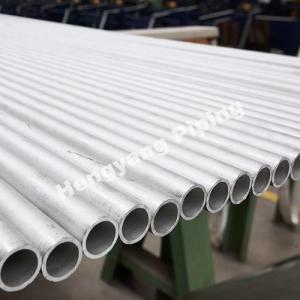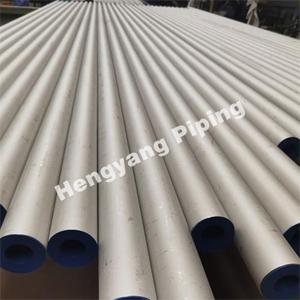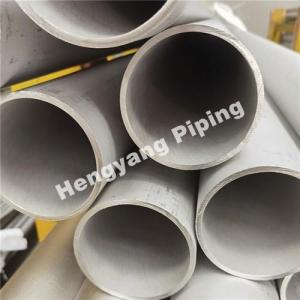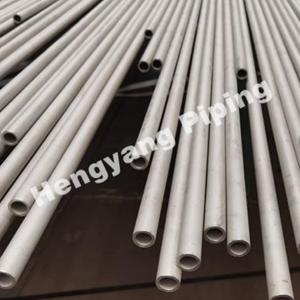The Difference Between Austenitic and Ferritic Stainless Steel
Stainless steel is a type of steel that contains at least 10.5% chromium by mass. The addition of chromium to steel creates a thin layer of chromium oxide on the surface of the steel, which prevents corrosion and provides its signature resistance to staining and rusting. Stainless steel is available in a variety of grades, each with its unique characteristics and properties.Two of the most common types of stainless steel are austenitic and ferritic. Although both types contain the same amount of chromium, they differ significantly in their composition, microstructure, and properties. In this article, we will explore the difference between austenitic and ferritic stainless steel.

Thin Wall Stainless Steel Tube
Composition:
Austenitic stainless steel is composed of iron, carbon, and at least 16% to 24% chromium, as well as other elements like nickel, manganese, and nitrogen. The nickel content of austenitic stainless steel is generally between 8% and 10.5%, which contributes to its superior corrosion resistance and strength at high temperatures.
Ferritic stainless steel, on the other hand, contains less nickel than austenitic steel, with a maximum of 0.10% nickel by mass. It contains at least 10.5% to 27% chromium and smaller amounts of other elements like carbon, nitrogen, and molybdenum. Ferritic stainless steel is magnetic and is composed of a body-centered cubic (BCC) crystal structure.
Microstructure:
Austenitic stainless steel has a face-centered cubic (FCC) crystal structure, which is non-magnetic. It has a high level of toughness and ductility, making it easy to weld and form into various shapes. Austenitic steel is also highly resistant to corrosion and oxidation and is commonly used in the food processing and chemical industries, where it is exposed to harsh chemicals and high temperatures.
Ferritic stainless steel has a body-centered cubic (BCC) crystal structure, which is magnetic. Ferritic steel is generally less ductile and less tough than austenitic steel. However, it is more resistant to stress corrosion cracking and is commonly used in automotive and appliance industries due to its excellent formability and magnetic properties.
Properties:
Austenitic stainless steel has several distinct properties that make it popular for use in various applications. It is non-magnetic, has high ductility and toughness, and is highly resistant to corrosion and oxidation. It is also resistant to scaling at high temperatures and can withstand cryogenic temperatures without becoming brittle.
Ferritic stainless steel, on the other hand, has lower ductility and toughness than austenitic steel. However, it is more resistant to stress corrosion cracking and has excellent formability and magnetic properties. Ferritic steel is also less expensive than austenitic steel, making it a popular choice for various applications.
Applications:
Austenitic stainless steel is commonly used in the food processing and chemical industries, where it is exposed to harsh chemicals and high temperatures. It is also used in architectural and construction applications, as well as in medical equipment and appliances.
Ferritic stainless steel is commonly used in automotive and appliance industries due to its excellent formability and magnetic properties. It is also used in architectural and construction applications, as well as in exhaust systems and decorative trim.
Conclusion:
In summary, austenitic and ferritic stainless steel differ in their composition, microstructure, properties, and applications. Austenitic steel is non-magnetic, has high ductility and toughness, and is highly resistant to corrosion and oxidation, while ferritic steel is magnetic, has excellent formability and stress corrosion cracking resistance, and is less expensive than austenitic steel. Both types of stainless steel have unique characteristics that make them suitable for specific applications, and their selection depends on the required properties.
If you don't know whether to choose austenitic or ferritic, please contact us to help you.





